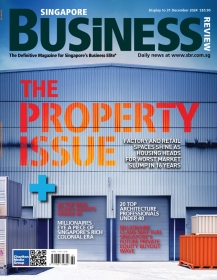
Property investment volume rebounds to US$26b in Q2
But Singapore's residential leasing market is likely to face further downside pressure.
According to Jones Lang LaSalle's Q2 2012 Asia Pacific Property Digest, despite global headwinds and a challenging global economic environment, strong investment volumes in the Asia Pacific property market point to signs of resilience. However, a slowdown in leasing activity points suggests that the region is not completely immune.
Direct commercial real estate investment activity rebounded in Q2 with volumes increasing 26% y-o-y to US$26 billion. Japan saw the biggest y-o-y growth (290%) as it recovered from the Tohoku earthquake last March, while Hong Kong, Singapore and China also registered strong double-digit growth.
With stronger investment volumes, capital values also grew in most major markets. Jakarta and Beijing CBDs saw the largest q-o-q increases (9% and 11% respectively) while capital values in Shanghai, Tokyo and Sydney exhibited small gains of up to 1.5%.
However, office leasing activity was down about 10% in Q2 compared to the same period in 2011, attributable to corporate caution and the flow-on effects of ongoing economic uncertainty.
“The Asia Pacific property markets are holding up relatively well given the global economic backdrop. Leasing activity levels should continue to trend moderately lower than last year’s record levels, while we expect investors will continue to search out opportunities, particularly in prime locations. In turn, we anticipate rents and capital values will continue to grow in most markets, albeit at a slower rate than 2011,” said Dr Jane Murray, Head of Research Asia Pacific at Jones Lang LaSalle.
“While we are seeing some healthy growth forecasts for the Asia Pacific economy, leasing activity has steadied during the course of the year. There has been a decline in the established financial markets, however we are seeing strong demand in key South East Asian markets, and certain cities in China. While this pattern is likely to continue through to the remainder of the year, we are optimisticthat leasing will remain largely stable,” said Jeremy Sheldon, Managing Director, Markets Asia Pacific Jones Lang LaSalle.
“South East Asia (SEA), led by Indonesia and increasing in the Philippines, is enjoying a growth spurt on the back of commodity demand and offshoring and outsourcing activities. How the SEA region would respond to the slowing global demand remains uncertain but the strong underlying domestic demand could mitigate this downside risk” says Dr Chua Yang Liang, Head of Research South East Asia. “Nonetheless Singapore remains at the cusp of this shift and given cost savings as the modus operandi for most firms together with tighter immigration, the Singapore residential leasing market is likely to face further downside pressure” adds Dr Chua.
Specifically, sector highlights include:
•In the office sector, expansion demand weakened across the region as corporates cut back on their near-term expansion requirements. However, there was still a significant amount of relocation and consolidation activity, particularly to decentralised locations offering cost savings. Aggregate rental growth across the region averaged 1% q-o-q, picking up from 0.2% in Q1, but still below the post-GFC average quarterly growth of 1.5%.
The financial centres of Hong Kong, Singapore and Sydney recorded modest rental declines of about 1%, while Tokyo saw an increase of about 1%, the first increase in four years. Further highlights are covered in the latest Jones Lang LaSalle Asia Pacific Office Index.
•Retail performed well in Q2 as leasing demand remained strong in Greater China and was relatively healthy in South East Asian markets. Rental rates were similarly positive in China and South East Asia, except for Singapore where prime rents fell marginally. Hong Kong was the regional outperformer with rental growth rates of 3% q-o-q and 14% y-o-y on the back of tight supply.
•While residential leasing demand remained generally healthy in China, Jakarta and Manila, high-end leasing demand was subdued in Hong Kong and Singapore. Rentals climbed in most markets outside of Hong Kong, Singapore and Bangkok.
•Industrial demand was buoyed by retail sales in Q2 2012, particularly in China, however rents remained stable across most monitored markets. With the slowdown in global trade, the exports/imports segment remained subdued.
























 Advertise
Advertise






